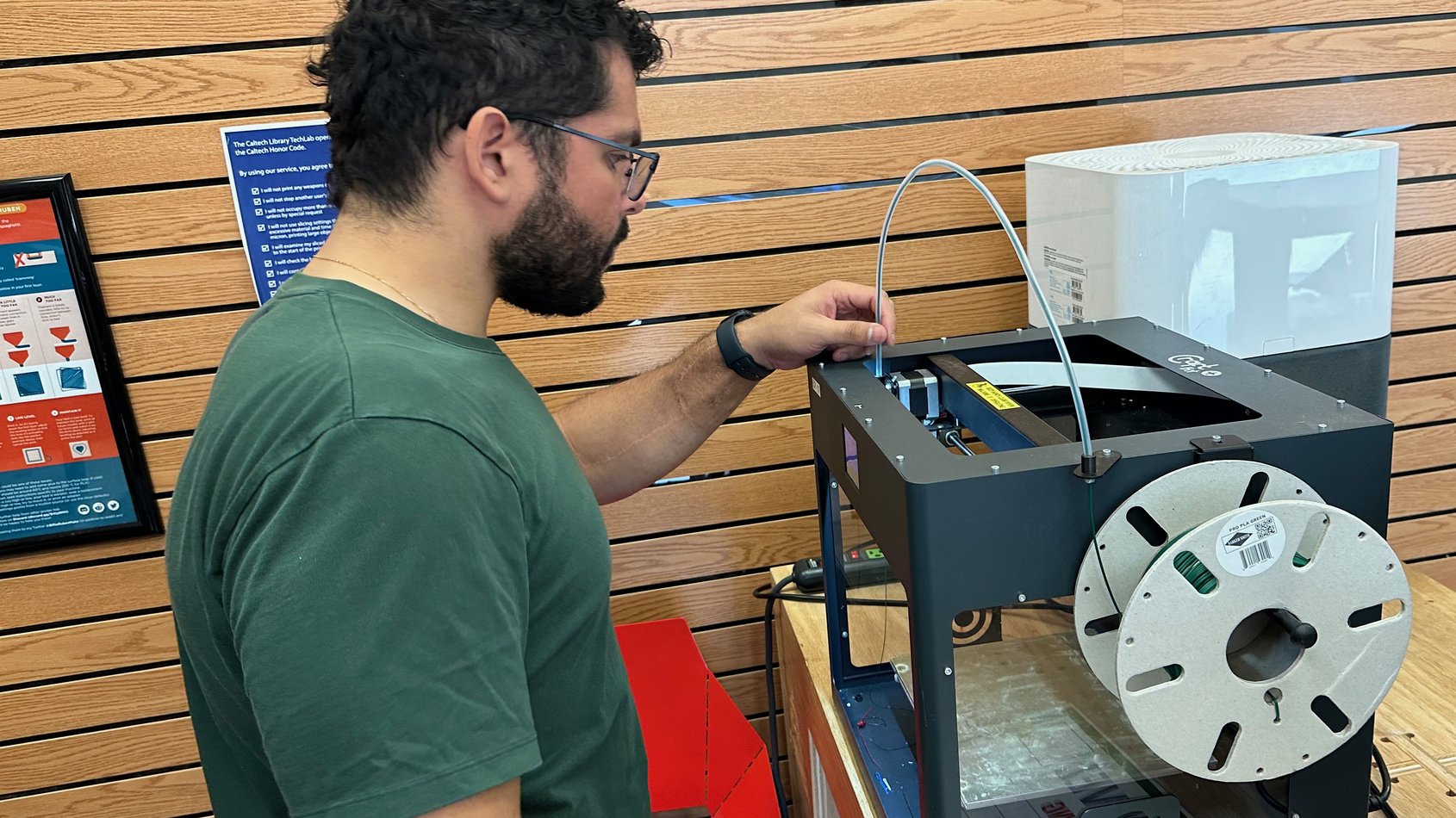Co-Curricular Experience
Gift to TechHub Unleashes Caltech Students' Inner Makers

A space for students to tinker, experiment, and create gets a boost in funding from an anonymous donor.
A generous gift from an anonymous donor will help maintain a laboratory where Caltech students can pursue creative play and any idea that sparks their curiosity. With the infusion of $20,000 in new funds, the Caltech Library can cover the costs of repairing and replacing equipment in the makerspace known as TechHub.
TechHub bridges the gap between the technology most college students own, such as laptops and tablets, and the advanced tools generally available only in research labs. The collaborative workshop offers about a dozen 3-D and resin printers, a large-format printer for posters and maps, and crafting machines for sewing, electronic cutting, and button-making. Additional resources include a repair workstation where users can fix their electronic devices and an area for trying out a virtual reality headset. There is an exhibition space as well, featuring displays curated by the Caltech Archives and Special Collections.
The space is open to any member of the Caltech community who attends a half-hour orientation. And, except for large-format printing, it is entirely free to use. TechHub logged 2,827 visits between May 2022 and April 2023.
“Often, Caltech classes ignite a passion in students to learn more, and they want to continue exploring long after the term is over,” says Kara Whatley, Caltech’s university librarian. “TechHub makes equipment accessible to anyone, regardless of the classes they’re taking or whose lab they’re in.”
When the donor approached Whatley’s team about making a gift to the Caltech Library, they specified that they wanted the money to benefit students. “How we’re allocating the gift makes the donor happy and makes the students happy,” Whatley says. “We are grateful for the opportunity to build on TechHub’s successes.”
TechHub opened in 2015 with financial assistance from the Moore-Hufstedler Fund. Originally located in the Sherman Fairchild Library of Engineering and Applied Science, it began as a modest lab with barely a handful of 3-D printers. Soon, demand outstripped supply. The library responded by reassigning staff to TechHub full time, hiring undergraduate workers, relocating the lab to larger quarters on the first floor of Caltech Hall, and consulting with the Caltech community on how to broaden the hub’s scope.
“We see the library as an important part of the student experience,” says Stephen Davison, head of digital library development. “So, it was important for us to give students a say in defining TechHub’s services and deciding future purchases for the lab.”
Rising sophomore Umran Koca first used TechHub’s 3-D printer to produce snowflake ornaments for the Christmas tree in her dorm room. Her most ambitious project came later in the school year. Interhouse party organizers at Grant D. Venerable House were preparing for a dark fairytale-themed dance and asked Koca to make a lifelike chandelier. Over the course of three days, Koca printed parts to assemble a chandelier that was a foot-and-a-half tall.
“TechHub is my creative outlet,” Koca says. “The fact that I can take any idea I have and materialize it in the lab is pretty cool.”
For all of the progress since TechHub was established, Ian Roberts, TechHub’s systems administrator and manager, sees more opportunities for it to grow. Based on community needs, Roberts says, the TechHub team would like to add more rapid-prototyping tools and equipment to produce wearable technology.
Roberts also reports that six classes now encourage undergraduates to visit TechHub. Engineering students in ME 72 Engineering Design Competition, for instance, visit TechHub to build custom parts for their robots, and engineers in BE/EE/MedE 189a: Design and Construction of Biodevices use the lab to create prototypes for their biosensing systems.
"It really is meaningful for us when we see what the students are able to do in their classes and in their research using the TechHub facilities," Whatley says.
This archived content may contain outdated information or references that may not reflect current practices or programs.